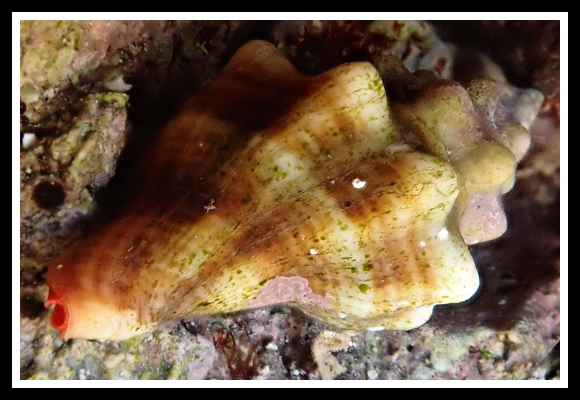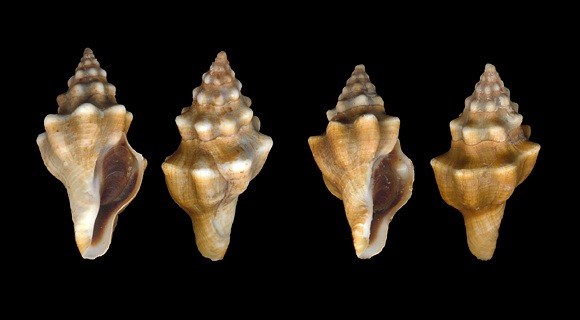
The species is commonly found in the eastern part of the range, and rare along the northwestern coasts. Uncommon in Corsica. Predator in the rocky infralittoral and the circalittoral.
Original taxon: Murex lignarius. Synonym: tarentina.
5m deep, in crevices, St-Georges cove, Lumio, north of Calvi, W. Corsica. 33-36mm.
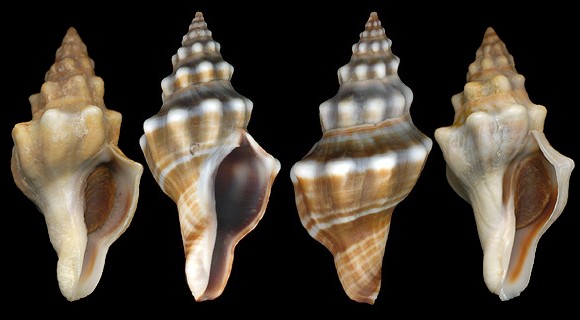
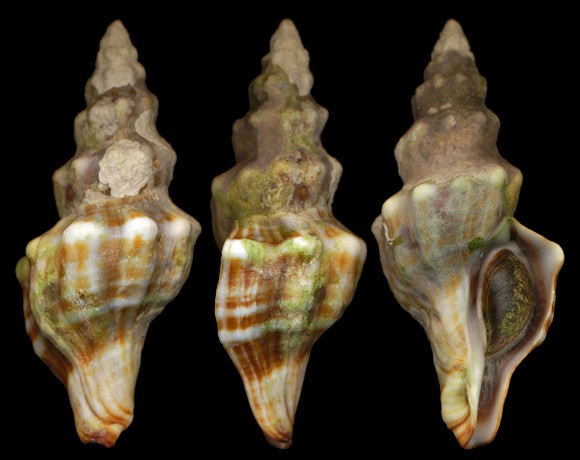
« Shell fusiform, a little short; spire little high; 9 angular whorls; suture linear; last whorl a little concave in the upper, then rounded, then lengthened and well attenuated downwards; test thick; 9 coarse, rounded ribs forming a very prominent nipple at the periphery; aperture subpiriform; channel a little short, wide; colour greyish white, ribs and peristome lighter, with darker decurrent bands. » – A. Locard: “Les coquilles marines des côtes de France”, Annales de la Société Linnéenne de Lyon n. ser. vol. 37, Lyon 1891, p.113.
The variant “major” Locard & Caziot: 2m deep, on rocks, Kolokitha cove, Spinalonga peninsula, Elounda, Lasithi, N. Crete. 64mm.
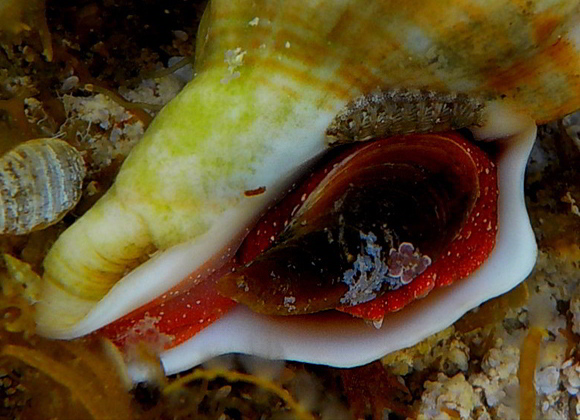
In the reefs at Ferma, east of Ierápetra, SE. Lassithi, SE. Crete.
Original picture provided by S. Daniels for iNaturalist.
– (CC BY-NC) –
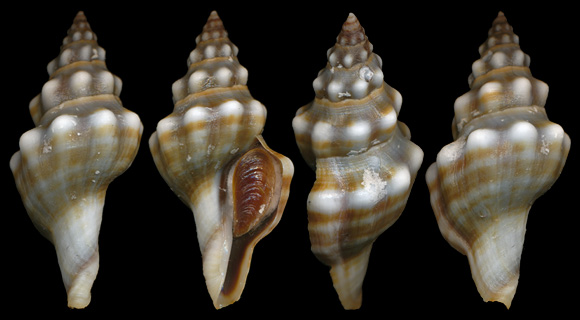
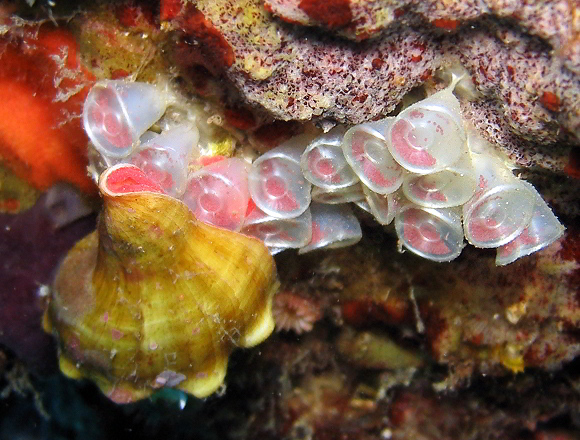
– (CC BY-NC) –
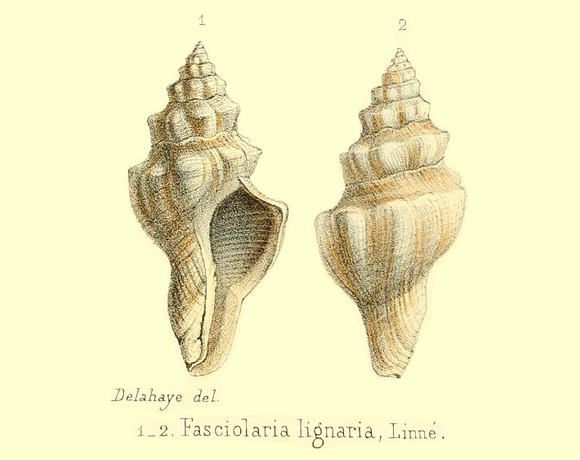
« Shell fusiform, with a small umbilical groove and a short channel anteriorly, somewhat solid, sometimes thick and quite heavy, opaque, without brightness; surface almost smooth with longitudinal knots and ribs; the colouration is of a slightly whitish, bluish white under a reddish or olive epidermis; suture simple, almost always wavy but with a lot of irregularity; the spire is elevated, pointed at the apex; it is composed of 8 to 9 whorls, angular in the middle, with a concave slope abapically, and provided in the shoulder with very protruding and obtuse, white nodes, which are continued anteriorly in thick, inflated ribs; the last whorl is barely longer than the rest of the spire, ventricose, angled towards its back and terminated abruptly ahead in a straight, short and quite wide channel; it has 7 to 9 longitudinal ribs with the same characters as those of the rest of the spire, but that disappear near the canal; the aperture is oval, inside white-blue or chestnut-coloured, smooth or with transverse grooves, anteriorly provided with a short open channel; the right edge is thin, sharp, slightly angled on the back, then arched, smooth and white on the inside; the columella is equally smooth and whitish, except in the medium which is a little dark, almost always presenting in its posterior part, near the insertion of the right edge, a small transverse fold; anteriorly two or three oblique plies are noticed, but little marked. The operculum is unguiform, horny, dark, almost smooth externally and with a terminal nucleus. » – op. cit. p.3 of “Fasciolaria”.
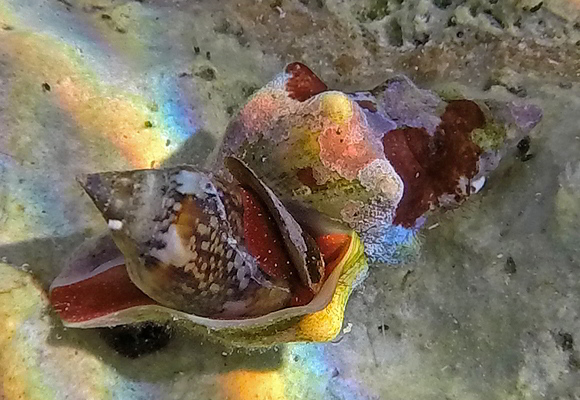
Original picture provided by E. Xharahi for iNaturalist.
– (CC BY) –
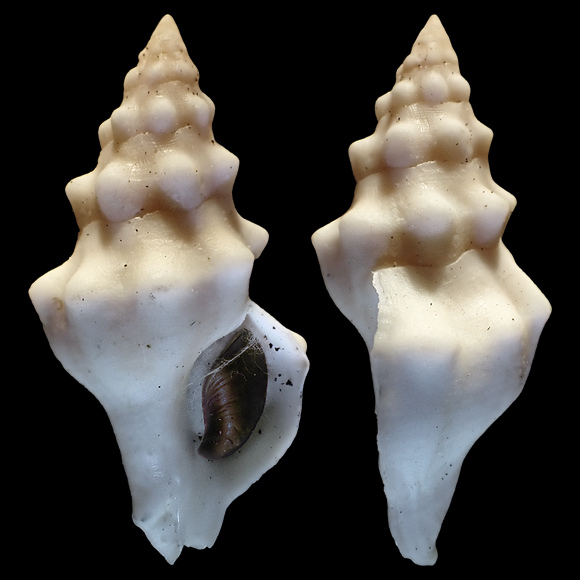
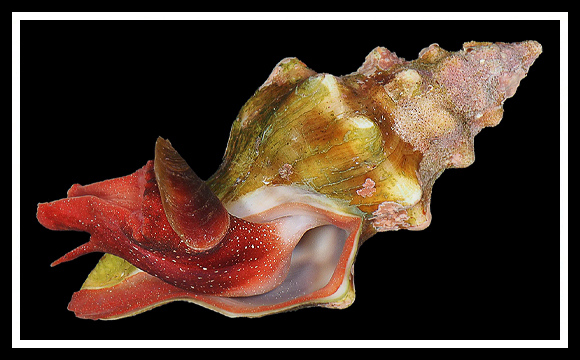
– (CC BY-NC-SA) –
